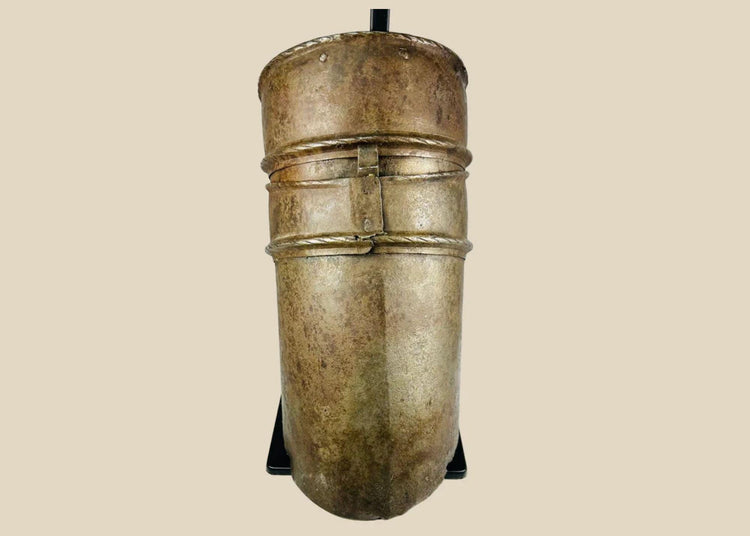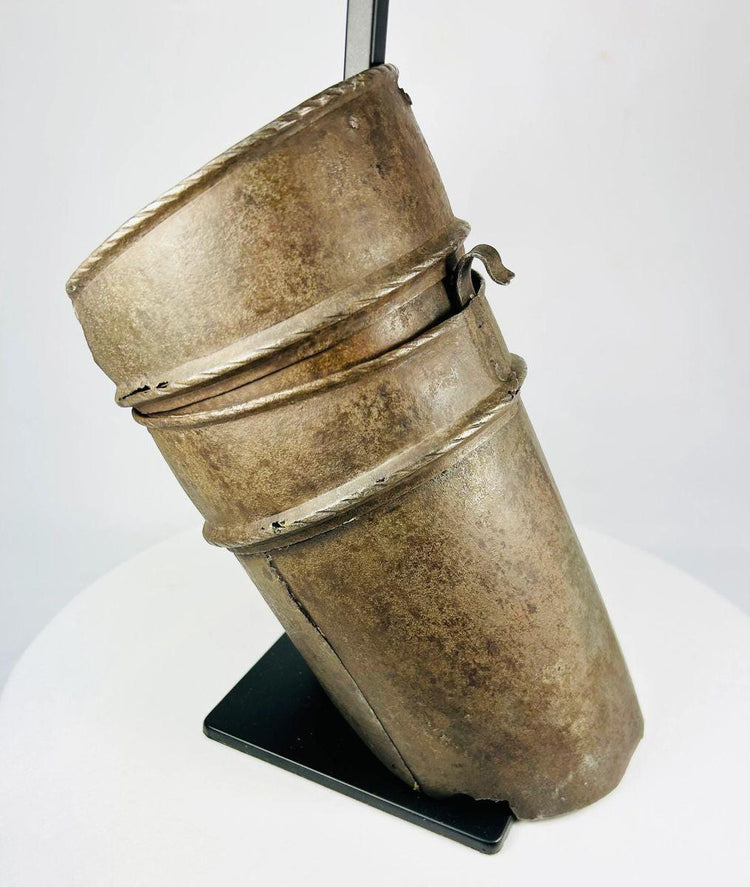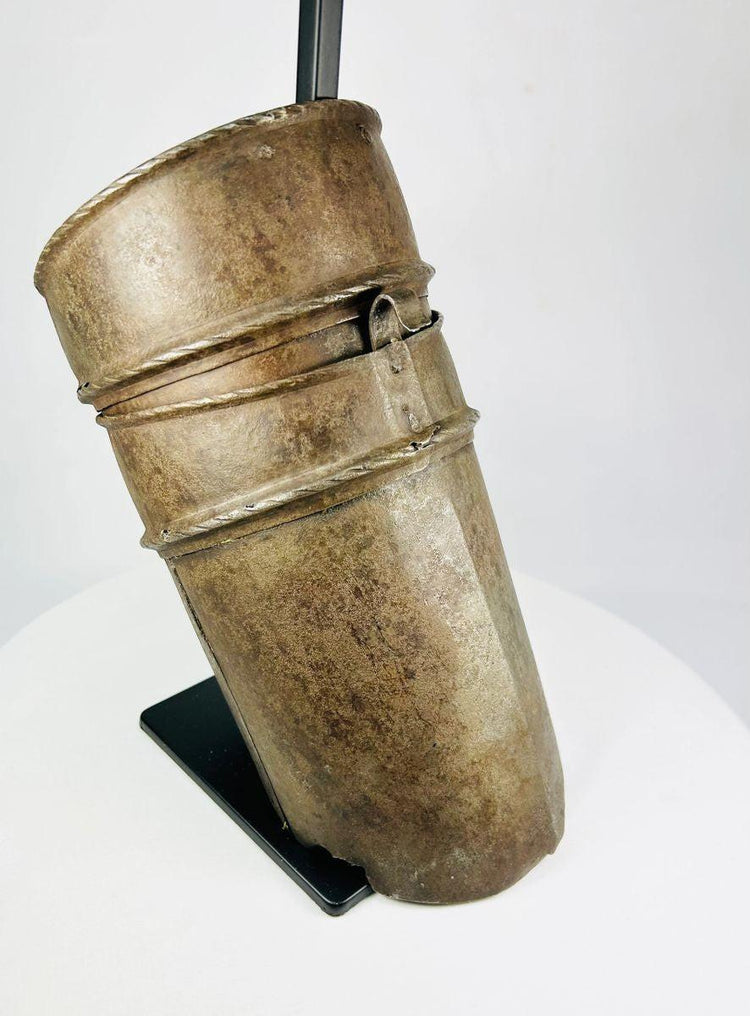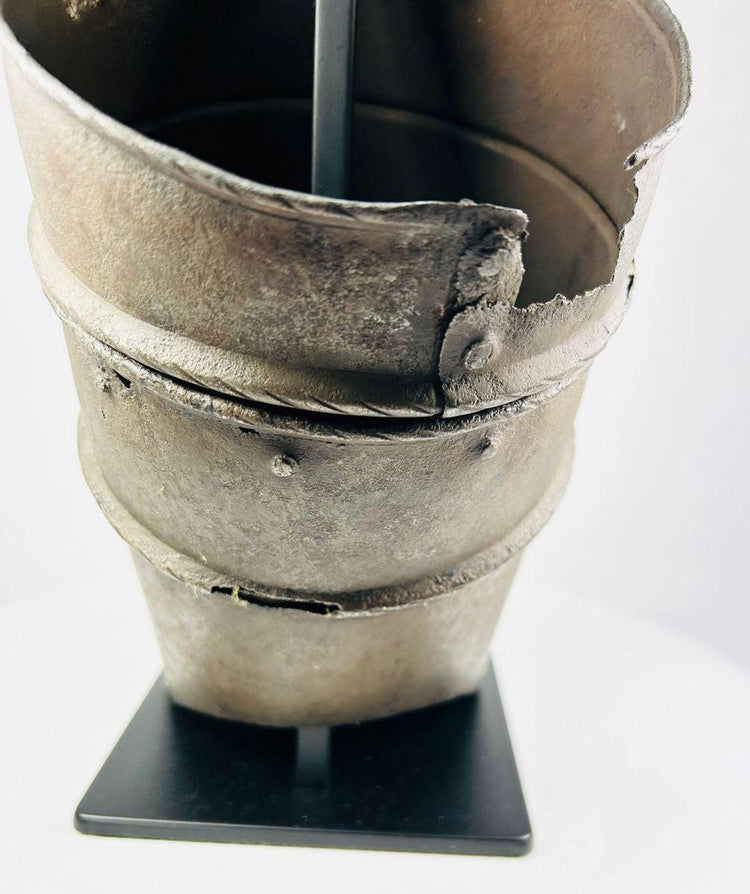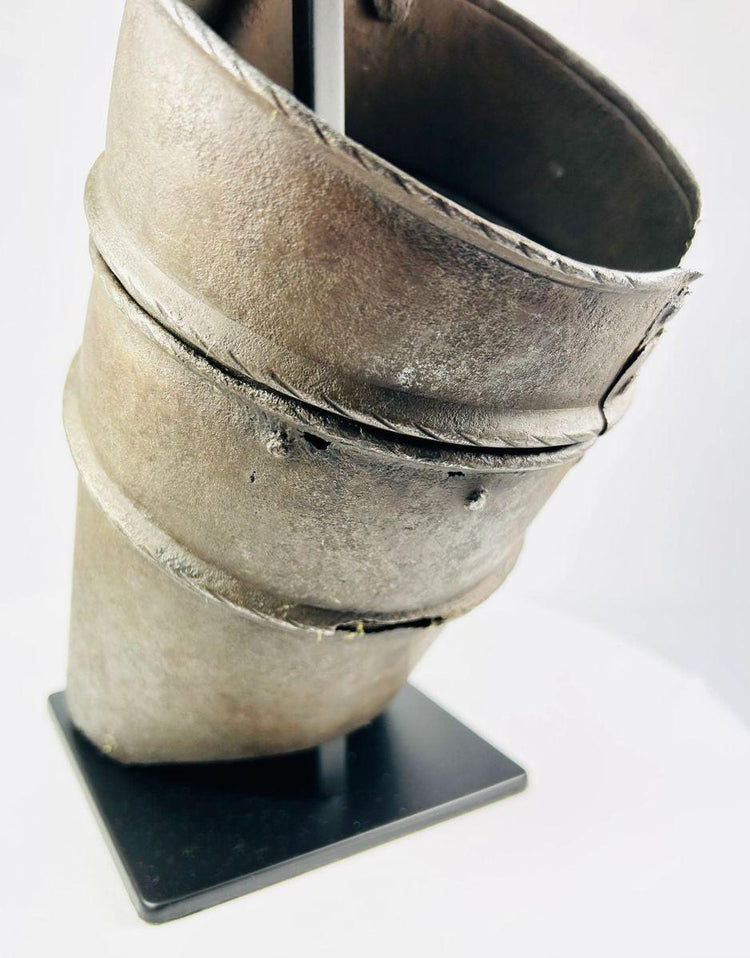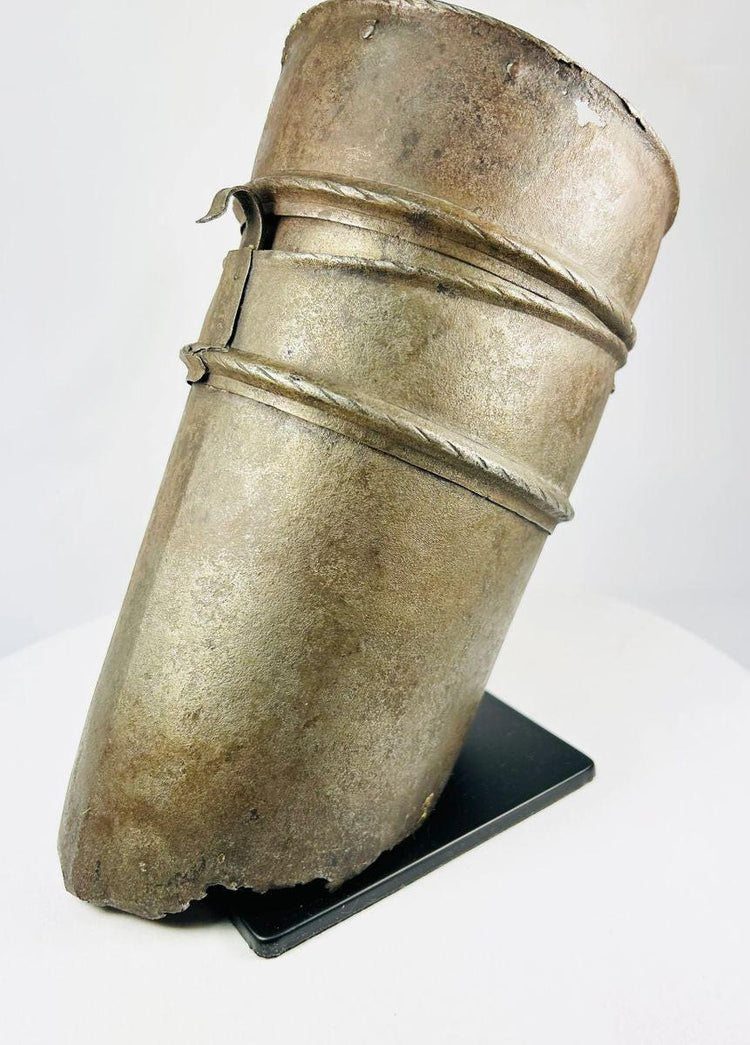Renaissance | Knight’s Upper Arm Defense | 16th Century Upper Cannon Armor
Description
More
Less
Historical Context & Origin
Region: Northern or Western Europe
Material: Forged steel with decorative detailing
Period: 16th Century CE
Description
This finely crafted upper arm defense, or “upper cannon,” exemplifies the ingenuity of Renaissance armor-making. Forged in steel during the 16th century, it reflects the period’s perfect balance of martial functionality and ornate design. Armorers of this era produced pieces not only to withstand the brutality of battle but also to symbolize the wealth and prestige of their noble owners. This element features articulated shaping to protect the upper arm while allowing flexibility, a practical hooked attachment for integrating with other armor components, and reinforced ridges to deflect enemy blows. Decorative twisted patterns enhance both its structural strength and aesthetic refinement, marking it as the property of an elite knight or noble warrior.
Features
- Forged steel construction with beveled ridges for deflection
- Rotating articulation for full arm mobility
- Hooked feature for attachment to additional defenses
- Twisted decorative patterns, blending strength with artistry
- Compact yet durable design suited to both battle and ceremony
Cultural Significance
Armor of this caliber was more than battlefield equipment—it was a status symbol. Owned by high-ranking knights or noblemen, it embodied martial prowess and social prestige. Its versatile design meant it could be worn both in combat and in ceremonial processions, underscoring the dual role of Renaissance armor as functional defense and visual splendor.
Condition
The piece survives with a natural aged patina and expected surface abrasions consistent with centuries of age. Despite minor wear, it remains structurally intact, preserving both its defensive qualities and its ornamental detailing. These signs of authenticity add to its historical and collector’s value.
Dimensions (approximate)
Length: 11 in
Age
Over 450 years old
Learn More
Read from Our Blog: The Craftsmanship & Legacy of Medieval Armour
Discover More About The Fashion in European Armor, 1500–1600 from The Metropolitan Museum of Art
Explore Our Collection of Medieval Armour
Description
Historical Context & Origin
Region: Northern or Western Europe
Material: Forged steel with decorative detailing
Period: 16th Century CE
Description
This finely crafted upper arm defense, or “upper cannon,” exemplifies the ingenuity of Renaissance armor-making. Forged in steel during the 16th century, it reflects the period’s perfect balance of martial functionality and ornate design. Armorers of this era produced pieces not only to withstand the brutality of battle but also to symbolize the wealth and prestige of their noble owners. This element features articulated shaping to protect the upper arm while allowing flexibility, a practical hooked attachment for integrating with other armor components, and reinforced ridges to deflect enemy blows. Decorative twisted patterns enhance both its structural strength and aesthetic refinement, marking it as the property of an elite knight or noble warrior.
Features
- Forged steel construction with beveled ridges for deflection
- Rotating articulation for full arm mobility
- Hooked feature for attachment to additional defenses
- Twisted decorative patterns, blending strength with artistry
- Compact yet durable design suited to both battle and ceremony
Cultural Significance
Armor of this caliber was more than battlefield equipment—it was a status symbol. Owned by high-ranking knights or noblemen, it embodied martial prowess and social prestige. Its versatile design meant it could be worn both in combat and in ceremonial processions, underscoring the dual role of Renaissance armor as functional defense and visual splendor.
Condition
The piece survives with a natural aged patina and expected surface abrasions consistent with centuries of age. Despite minor wear, it remains structurally intact, preserving both its defensive qualities and its ornamental detailing. These signs of authenticity add to its historical and collector’s value.
Dimensions (approximate)
Length: 11 in
Age
Over 450 years old
Learn More
Read from Our Blog: The Craftsmanship & Legacy of Medieval Armour
Discover More About The Fashion in European Armor, 1500–1600 from The Metropolitan Museum of Art
Explore Our Collection of Medieval Armour
You May Also Like






























